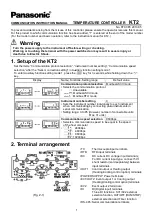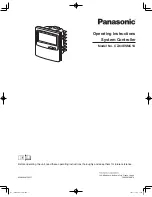
Technical Manual Glass Room Temp. Contr. SCN-RT1Gx.01
MDT technologies GmbH •
51766 Engelskirchen • Papiermühle 1
Tel.: +49-2263-
880 • Fax: +49
-2263-4588
• [email protected] • www.mdt.de
62
The dynamic range for an additional level is shown at the following chart (the setting options are
shown, when an additional level is activated):
ETS-text
Dynamic range
[default value]
comment
Direction of controller
normal
inverted
indicates the controlling behavior at
rising temperature (4.5.5)
Control value
2-Step control (switching)
PI control switching (PWM)
Setting of the used control value
Distance (in K)
1,0K
–
10,0K
[2,0K]
Distance between the setpoints of the
normal controlling and the setpoint for
the additional level
Table 48: Additional level
An additional level can only be chosen for heating. The direction of the controller can be chosen for
the additional level, too. The control value can be chosen as PI-control switching (PWM) or 2-Step
control. So the communication object for the additional level has always the size of 1 Bit.
The distance in K describes the setpoint of the additional level. The adjusted distance is deducted
from the setpoint of the basic level; the resulting value is the setpoint for the additional level.
Example:
The controller has the operating mode comfort, with the basic comfort setpoint of
21°C. The distance is adjusted as 2,0K. So the setpoint for the additional level is 21°C-
2,0K=19,0°C.
An additional level can be used at carry systems to reduce the warm up time. For example can a
radiator be used as additional level for reducing the war up time of an underfloor heating.
The following chart shows the relevant communication object:
Number
Name
Length
Usage
9
Control value additional
heating
1 Bit
control value for the additional level
Table 49: Communication object additional level
















































